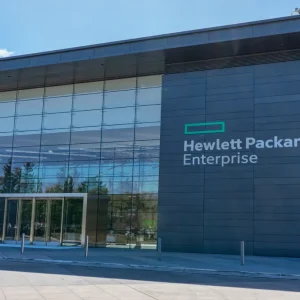
Tokyo-based information technology developer Fujitsu are unveiling a new datacentre cooling systems that reduces energy costs by 29 percent.
The technology is being presented today at the International Conference on Control, Automation, and Systems in South Korea by Fujitsu Laboratories.
Natural cold air is brought into the datacentre. Using chilled air from outside is one of the ways the tech helps to reduce energy cost.
Writing in a release, Fujitsu note that: “Datacentre users execute a wide variety of services with different energy consumption, and so the amount of heat emitted by each server tends to change rapidly.
“In order to achieve further reductions in energy consumption, it is necessary to dynamically control setting values for each cooling device while both maintaining preset management requirements for environmental temperature and humidity for each server, and tracking changes in heat from server equipment.”
Sensors are placed around cooling equipment within the datacentre in order to measure humidity and temperature. The data from these sensors is analysed to calculate how much energy is required to cool the datacentre and remove the humidity.
Algorithms developed in-house by Fujitsu control the intake of cold air from outside and maintain an efficient ratio of internal air to outside air. By continually monitoring the temperature and predicating in advance where cooling will be required, the system deals with temperature and humidity in an energy-efficient manner.
Fujitsu Datacentre
This technology works in tandem with a predicative model designed by Fujitsu in 2016 that uses model-based control settings in datacentres to forecast temperature fluctuations in the room.
Fujitsu wrote on the announcement in 2016 that: “This new technology now creates a database that incorporates the status of air-conditioning equipment, including the utilization rate of machines and fan speed, and has a requirement to not only select useful information against prediction targets, but also to automatically select at least one variable from the air-conditioning equipment status database.”
In doing so Fujitsu Laboratories created a predictive model that responds to changes in the datacentre by building sequential models.
The company has just completed trials of the new air cooling technology in an operational 300-rack Fujitsu datacentre. That trial found it reduced energy consumption by 29 percent.
The company have extrapolated using this data from the trial and based on calculations of a: “1,000 rack datacentre that uses 70 million kWh/year for servers and 22 million kWh for cooling,” that energy savings of 6.4 million kWh/year can be expected.
See Also: Fujitsu Furnishes HMG with Hybrid Cloud Roadmap amid Migration Challenges
Fujitsu Laboratories have begun plans to roll out their combined predicative and air circulation and intake technology to their own datacentres starting in 2019, with plans to build a low-energy cooling computer systems that incorporates the technologies also to be developed in 2019.






